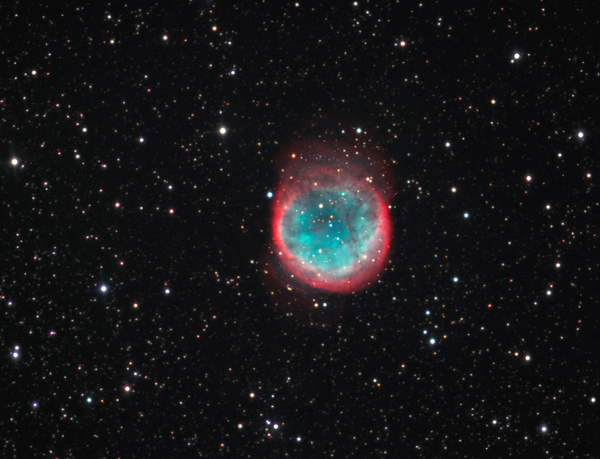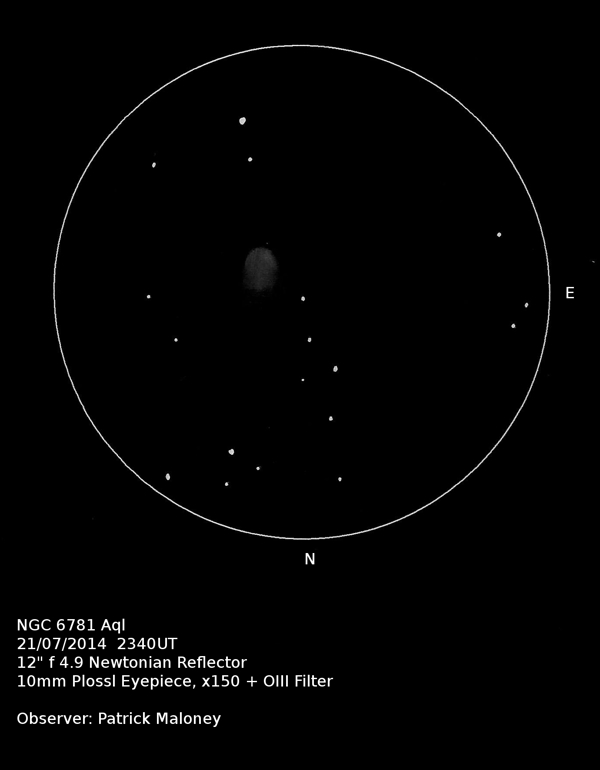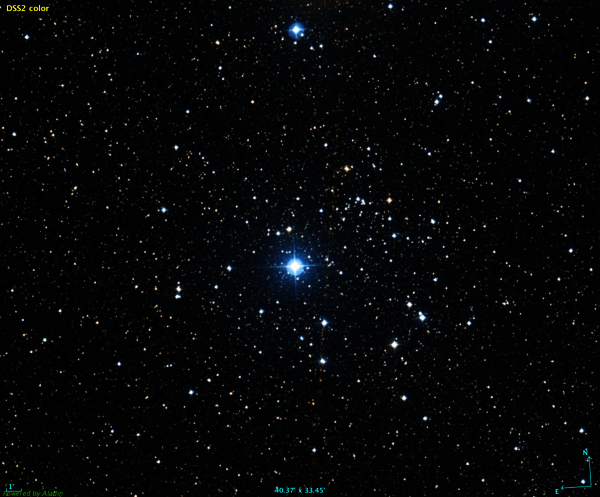NGC 6885 and NGC 6781
July 2023 - Nebula and Cluster of the Month
The Summer Miky Way is on full show this month and by the end of July, astronomical darkness will have returned for most of us.
This month, then, we’re going to look at two fine objects – a cluster and a nebula, both easily visible during the brief darkness of the summer night.
Our first object is a planetary nebula, NGC 6781. It lies in Aquila, 4° northwest of 3.4 magnitude δ Aquilae, or if you prefer, 8.3° southwest of first-magnitude Altair.
It was discovered, unsurprisingly, by William Herschel on the night of 30 July 1787. He placed it in his third category – very faint nebulae (but never let that put you off) – as number 743. His description reads considerably faint, irregularly round, resolvable, 3 or 4’ diameter
. Clearly, Herschel was still under the impression that all nebulae could be resolved into stars at this stage. More unnervingly, he regularly attested to the resolvability of these objects.
Despite Herschel putting it in his ‘very faint’ class, NGC 6781 shines at a quite comfortable magnitude 11.4. It is large, though Herschel’s estimate is somewhat exaggerated. It’s about 2.5’ in diameter.
Images show a nebula that looks like a ring, which has burst on its north edge, spilling matter out a small distance to the north. In fact, we’re probably looking down the long axis of a barrel-shaped nebula, much as we are with M57 in Lyra.

I observed NGC 6781 with a 12” (300mm) Newtonian in 2014. I found it easily visible, even without the help of an OIII filter. My description reads A very odd-shaped nebula. The southern end is brighter with a short, almost cometary tail to the north. There is a brighter section to the southeast. Fairly large and visible without the OIII filter at x83. The OIII filter adds some detail.

I make it a rule never to look at an image of an object before I observe it, so ensuring that what I draw is what I see, not coloured by any expectations or preconceptions. The fact that I saw the ‘burst’ in the ring, which I described as a ‘...short, almost cometary tail’, shows that this feature is visible to the visual observer, despite looking faint in images.
Our second object is a cluster in Vulpecula, NGC 6885. Again discovered by William Herschel, this time on 9 September 1784. He described his find as A cluster of coarse, scattered stars. Not rich.
He entered it into his catalogue as 20 H.VIII. On the following night, he recorded another cluster, 12m of RA and 15’ of declination away. He entered it as 22 H.VIII and described this one as A cluster of coarse, scattered stars.

This second object entered the NGC as NGC 6882. The only problem is that at the location of the second cluster, there is nothing to be found. The coordinates of 22 H.VIII (NGC 6882) are right on the edge of the previously discovered cluster 20 H.VIII (NGC 6885). There can be little doubt that this was an accidental reobservation of the cluster he discovered the night before.
To further complicate matters, Per Collinder in his 1931 listing of clusters for his thesis ‘On Structural Properties of Open Clusters and Their Spatial Distribution’ gave additional catalogue numbers to NGC 6885 and NGC 6882 (NGC 6885 = Cr 417, NGC 6882 = Cr 416), leading some to believe that there are up to four open clusters in this area.
‘The Collinder Catalogue of Open Star Clusters: An Observer’s Checklist’1, edited by Thomas Watson, in the notes for these two entries says Cr. 416 & 417: Possibly only a part of NGC 6885.
Some observers have noted that there may (with a squint, I think) be two different concentrations of stars here. There is a more concentrated area of fainter stars, mostly within the larger concentration of brighter stars, that some authors have identified as Cr 416. The Lund catalogue says they are all in the same group. Trumpler disagrees, placing them at different distances.
My feeling is that Herschel made a mistake on 10 September 1784, and all the disagreement stems from that. I have studied the region in much detail at the eyepiece and to my eyes, there is only one cluster here.
It is a large, loose cluster centred on 5.9 magnitude 20 Vulpeculae, which is unlikely to be a member of the cluster as it is so much brighter than all the other stars. I counted about 50 stars, formed into a triangle about 15–20’ long on each side. In the centre of the triangle is a near-void, in which 20 Vul lies. The stars are generally 9th–13th magnitude.
| Object | RA | Dec | Type | Magnitude |
|---|---|---|---|---|
| NGC 6781 | 19h 18m 28s | +06° 32’ 25” | Planetary nebula | 11.4 |
| NGC 6543 | 20h 11m 55s | +26° 29’ 14” | Open cluster | 8.1 |
References:
- The Collinder Catalog (updated) on Cloudy Nights (accessed 24 June 2023)